NOXIOUS WEEDS
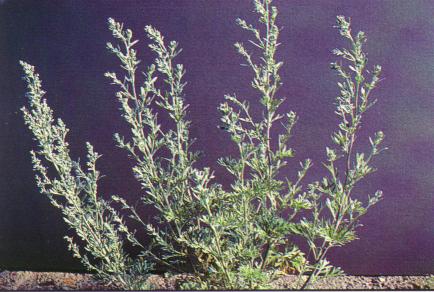
ABSINTH WORMWOOD
Artemisia absinthium L.
Absinth Wormwood is an erect perennial growing up to 4′ tall. The leaves are 1 to 3″ long, deeply dissected and covered with fine hair which is gray or silver in color.
The stems are erect and covered with fine hairs. The flower is small, yellow and found as panicles toward the top of the plant.
The seeds are formed in the late summer or fall. It has a large, woody tap root. It’s ordor s very distinctive. European in origin, it has been used for medicinal purposes.
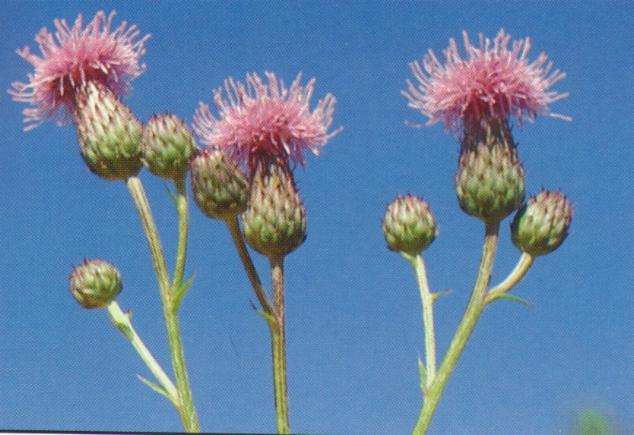
CANADA THISTLE
Cirsium arvense (L.) Scop.
Canada Thistle is an erect perennial growing up to 4′ tall. Leaves are variable shades of green, oblong or lance shaped, deeply cut, usually spiny with toothed margins and slightly hairy below. Stems are smooth to lightly hairy and branched at the top. Flowers are about 1/2″ in diameter and in small clusters. The color is light lavender to rose purple. Plants can be male or female. Roots are extensive, fleshy and a major source of expansion. Seeds are smooth, various shades of brown and tipped by a cupped conical point, approx. 1/8″ long.
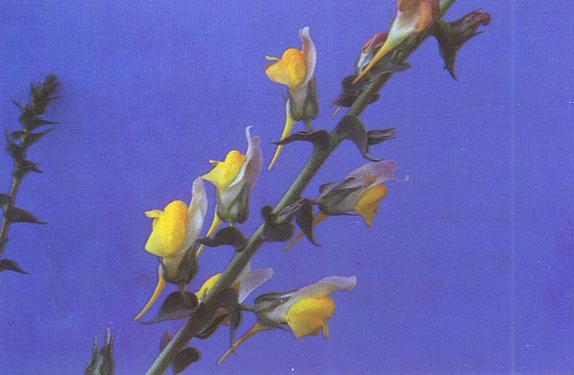
DALMATION TOADFLAX
Linaria genistifolia ssp. dalmatica (L.)
Dalmation toadflax is a perennial, up to 3 ft tall reproducing by seed and root stalks. Leaves are dense, alternate, entire, upper leaves are broad based. Flowers are borne in axils of upper leaves and are 2-lipped, 3/4 to 1.5″ long with a long spur, yellow with an orange, bearded throat. Fruit is a 2-celled capsule with many irregularly angled seeds.
Dalmation Toadflax is an aggressive, escaped ornamental. A deep root and waxy leafy makes control very difficult.
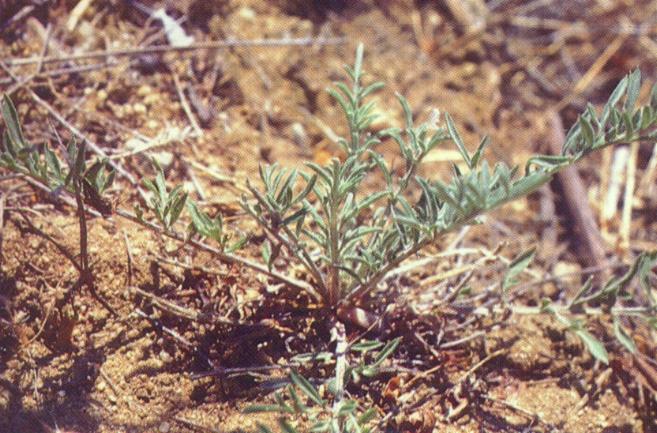
DIFFUSE KNAPWEED
Centaurea diffusa Lam.
Diffuse Knapweed is a annual or biennial up to 2′ tall. A rosette forms the 1st year with a flowering, elongating stalk the 2nd year. Leaves are greyish green, alternate, basal leaves whorled, upper leaves reduced and covered with fine hair. A single, erect, hairy stem grows from a taproot and is branched near the base. Flowers are solitary mostly white with a few pink or lavender. Seedhead bracts end as sharp rigid spines. Seeds are oblong, dark brown or gray with longitudinal lines.
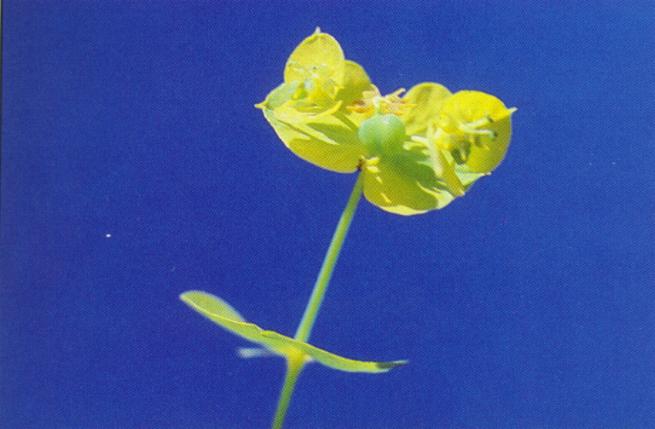
LEAFY SPURGE
Euphorbia esula L.
Leafy Spurge is an erect perennial up to 3′ in height. spreading by seed or roots. Leaves are alternate, long, narrow, 1/4″ wide and 2″ long.
Stems are hairless, contain a milky sap and branch at the top. True flowers are surrounded by large heart shaped floral leaves which turn yellow-green.
Roots are deep spreading, persistant, brown in color with numerous pink buds
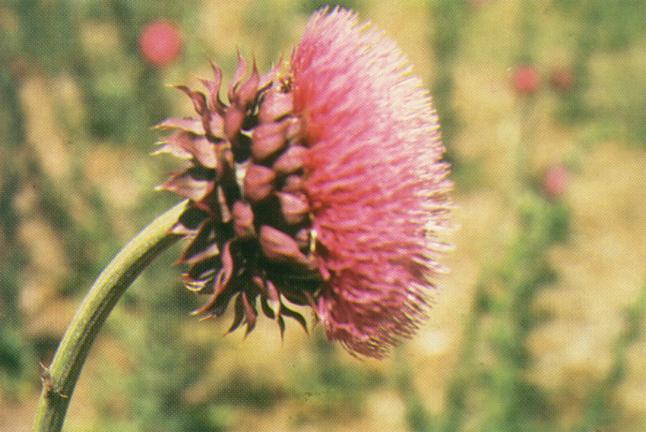
MUSK THISTLE
Carduus nutans L.
Musk thistle is a biennial or winter annual growing up to 7′ tall. A rosette is formed the first year with a flowering, elongating stem the 2nd year.
Leaves are dark green with a light midrib, hairless on both sides with long sharp spines. The stems are hairless.
Flowers are solitary, terminal, nodding heads, 11/2″ to 3″ across. Color is ranges from deep rose to purple. It has a fleshy taproot, hollow near the surface.
Reproduction is by seed only, 20,000+ per plant. Viability is at least 10 years.
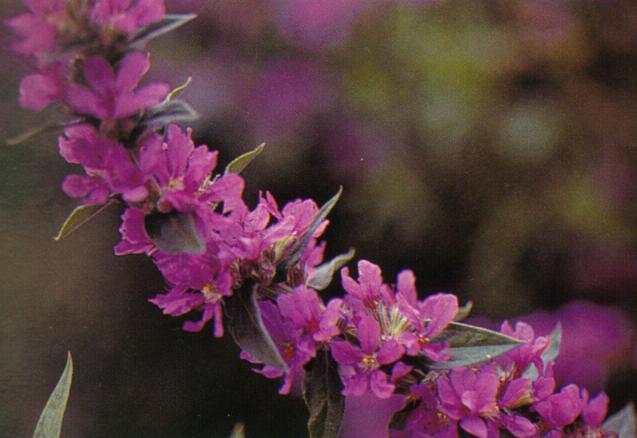
PURPLE LOOSESTRIFE.
Lythrum salicaria L.
Purple Loosestrife is a perennial, grows to 8′ that prefers damp soil. Leaves are simple, lance-shaped, have smooth margins and are opposite or whorled. Stems branch, ending in flower stalks. Flowers are rose-purple in color with long vertical recemes having 5-7 petals and numerous stamens. Roots are large and adapted to aquatic sites. Can grow dense enough to impede water flow in canals or ditches

RUSSIAN KNAPWEED
Acroptilon repens L.
Russian Knapweed is a greyish perennial up to 3′ tall and typically in dense clumps. Leaves are alternate and of several types. Upper are small, narrow, smooth edged; stem are larger with small toothed margins; basal are deeply notched. Stems branch profusely with terminal flowers. Flowers are thistle-like with scaly seed head and lavender color. Roots are very dark and heavily scaled. Seeds are flattened, ivory in color and held in cup shaped seed heads.
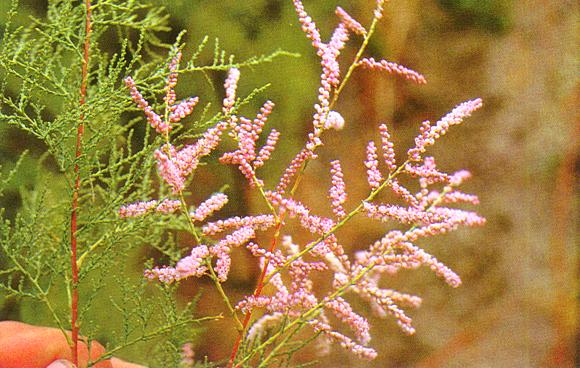
Saltcedar
Tamarix ramosissima Ledeb.
Small tree or shrub, 5 to 20 ft tall. Leaves are small and scale-like. Flowers are pink to white with 4 or 5 petals depending on species.
An ornamental that has naturalized along streams, river and canals in the West. Large plants transpire 200 plus gallons of water per day; drying up ponds and streams.
Monoculture growth severely limits wildlife diversity. Also known as tamarisk.
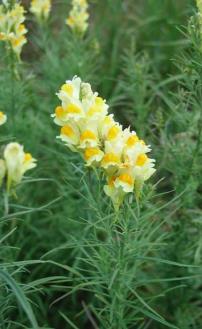
YELLOW TOADFLAX
Linaria vulgaris
Yellow toadflax is a creeping perennial 12 to 24″ tall. Leaves are pale green, narrow, 2.5″ long and pointed at both ends.
Flowers are 1″ long with a bearded orange throat. Similar to “snapdragons or butter and eggs”, common garden flowers.
This plant was introduced into the US as an ornamental in the mid-1800’s. An extensive root system makes it an aggressive invader of ROW, rangelands, waste places and cultivated fields. It is difficult to control once established
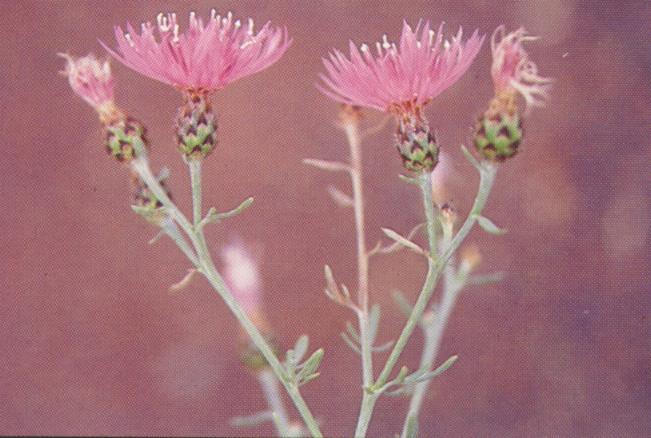
SPOTTED KNAPWEED
Centaurea maculosa Lam.
A biennial or short lived perennial with a large taproot; 1 to 3 ft tall. Principal stem leaves are pinnately divided. Flowering heads have stiff bracts tipped with a dark fringe. Flowers are usually pinkish-purple.
Introduced from Eurasia as a contaminant in alfalfa and clover seed.
It establishes quickly on disturbed ground and appears to inhibit the growth of surrounding vegetatation.
Western Montana is heavily infested.
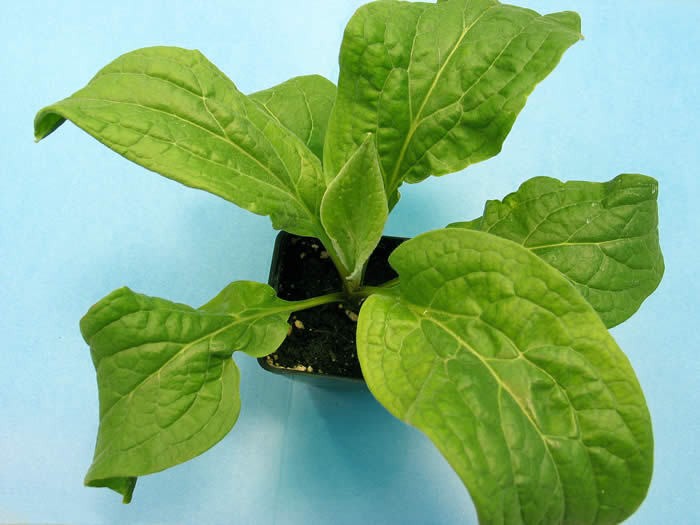
Houndstongue
Cynoglossum officinale L.
Plants generally are found in wooded areas or in pastures near trees and shrubs. Nutlets on sheep can reduce the value of wool and can irritate animals if they become imbedded near the eye. Houndstongue contains alkaloids that are especially toxic to cattle and horses. Animals rarely graze green plants but will eat dried plants in hay.
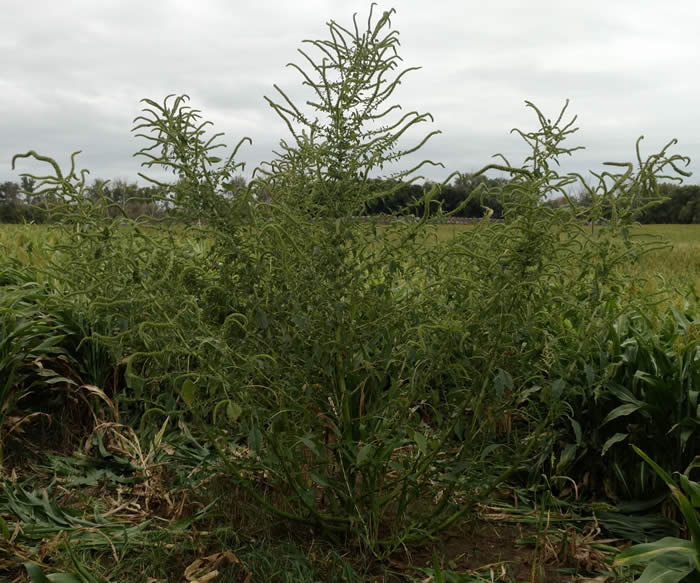
Palmer Amaranth
Amaranthus palmeri S. Watson
Palmer amaranth has reduced yield up to 91 percent in corn and 79 percent in soybean. The weed has a wide genetic diversity, which allows the plant to adapt to new environments and has enabled the plant to develop resistance to many herbicides used to control pigweed species. Early identification and eradication are the best method to prevent Palmer amaranth from becoming established in North Dakota.
Photos and information adapted from “Weeds of the West” by Tom Whitson
For Other troublesome weeds of North Dakota

